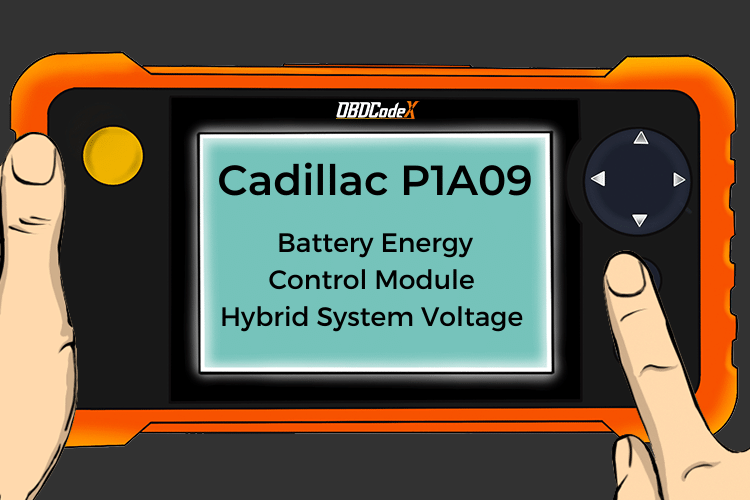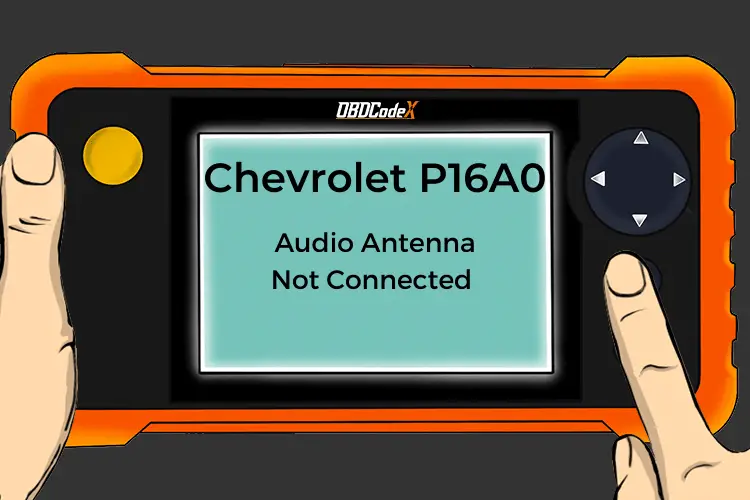P06AB: PCM/ECM/TCM Internal Temperature Sensor B Circuit
Is your scanner showing P06AB?
No worries. We'll show you what it means and how to deal with it.
P06AB: PCM/ECM/TCM Internal Temperature Sensor B Circuit
OVERVIEWWhat Does The P06AB Code Mean?
OBD-II trouble codes P06AB, P06AC, P06AD, and P06AE are associated with the internal temperature sensor “B” circuit of different modules. This circuit incorporates the Power Control Module (PCM), the Engine Control Module (ECM) and/or the Transmission Control Module (TCM). Refer to a vehicle specific repair guide to determine which is the “B” circuit in your particular case.
The purpose of the PCM/ECM/TCM internal temperature sensor “B” circuit is to monitor the temperature of various sensors housed within the control modules. Malfunctions are identified through the process of control module self-test failures. On some automobiles, the three modules are integrated into one consolidated unit, normally referred to as the PCM.
When the PCM, ECM or TCM detects improper signals within the internal temperature sensor “B” circuit, code P06AB will be set and the check engine light or the transmission warning lamp will be illuminated.
What Are The Symptoms Of The P06AB Code?
Symptoms of a P06AB trouble code may include:
- Engine will not start
- Engine may stall
- Improper shifting
- Transmission warning lamp illuminated
- Check engine light illuminated
What Are The Potential Causes Of The P06AB Code?
Causes for this P06AB code may include:
- Corroded or damaged connector
- Loose or defective control module ground strap
- Faulty or damaged wiring
- Defective PCM, ECM, or TCM
How Serious Is This P06AB Code?
The severity of this code can vary tremendously from just an illuminated check engine light or a transmission warning lamp on a vehicle that starts and runs to an automobile that will stall or not start at all. The code can be serious depending on the specific nature of the problem.
How Can You Fix The P06AB Code?
The first step in the troubleshooting process for any malfunction is to research the Technical Service Bulletins (TSB’s) for the specific vehicle by year, model and power plant. In some circumstances this can save a lot of time in the long run by pointing you in the right direction.
The second step is to locate all of the control modules within this circuit and perform a thorough visual inspection to check the associated wiring for obvious defects such as scraping, rubbing, bare wires, or burn spots. This process must also include ground straps and ground wires. Next is to check the connectors for security, corrosion and damaged pins. This process must include the PCM, ECM and the TCM based on the specific vehicle and the control module configuration. The specific tech data for the automobile will assist you with component location and the control module configuration.
Advanced Steps
The advanced steps become very vehicle specific and require the appropriate advanced equipment to perform accurately. These procedures require a digital multi meter and the specific technical references for the vehicle. Specific technical data will include troubleshooting charts and the appropriate sequence to follow assisting you with an accurate diagnosis.
Voltage Checks
Specific troubleshooting guidelines must be referenced to determine the voltage ranges required for the various control modules.
These references will include the pin numbers and the voltage requirements that are associated with the PCM/ECM/TCM internal temperature sensor/circuit. Most, but not all control modules require a reference voltage of approximately 9 volts. Voltage requirements will vary based on the specific year and model of the vehicle.
If this process identifies the absence of a power source or ground, continuity testing may be required to check the integrity of the wiring, connectors and other components. Continuity tests should always be performed with the power removed from the circuit and the normal readings for wiring and connections should be 0 ohms of resistance.
Resistance or no continuity is an indication of faulty wiring that is open or shorted and must be repaired or replaced. A continuity test from the various control modules to the frame will confirm the serviceability level of ground straps and ground wires. The presents of resistance is an indication of a loose connection or possible corrosion.
Recommended Parts
Below are some recommended auto parts to help you address the trouble code affecting your vehicle and get it running smoothly again:
>>> WORKPRO 582-piece Crimp Terminals, Wire Connectors, Heat Shrink Tube, Electrical Repair Kit
>>> ECU
Note: During the purchasing process, please check carefully whether the part you want to buy fits your car!
Reference Sources
P06AB PCM/ECM/TCM Internal Temperature Sensor B Circuit, OBD-Codes.




